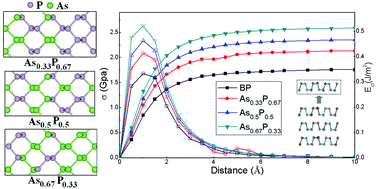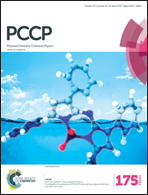The electronic structure, mechanical flexibility and carrier mobility of black arsenic–phosphorus monolayers: a first principles study†
Abstract
New artificial layered semiconductors – black arsenic–phosphorus (b-AsP) – which have tunable band gaps owing to good tunability of the chemical compositions have been synthesized in a recent experiment. In the present work, first principles calculations are performed to systematically study the structure, and mechanical, electrical, and transport properties of b-AsP monolayers. The mechanical analysis demonstrates that the exfoliation of single-layer b-AsP systems from the bulk form is more difficult compared with that of pure black phosphorus (BP). In addition, the breaking strain of the b-AsP monolayer is comparable with other widely studied two dimensional materials, indicating their excellent mechanical flexibility and good potential for flexible device applications. Besides, the electronic structures of b-AsP system monolayers are not sensitive to their specific compositions, which however, can be flexibly modulated by the strain effect. The predicted carrier mobilities of b-AsP systems are directionally anisotropic, similar to pure BP. However, the degradation of their carrier mobilities may become a practical limitation in real electronic device applications.


 Please wait while we load your content...
Please wait while we load your content...